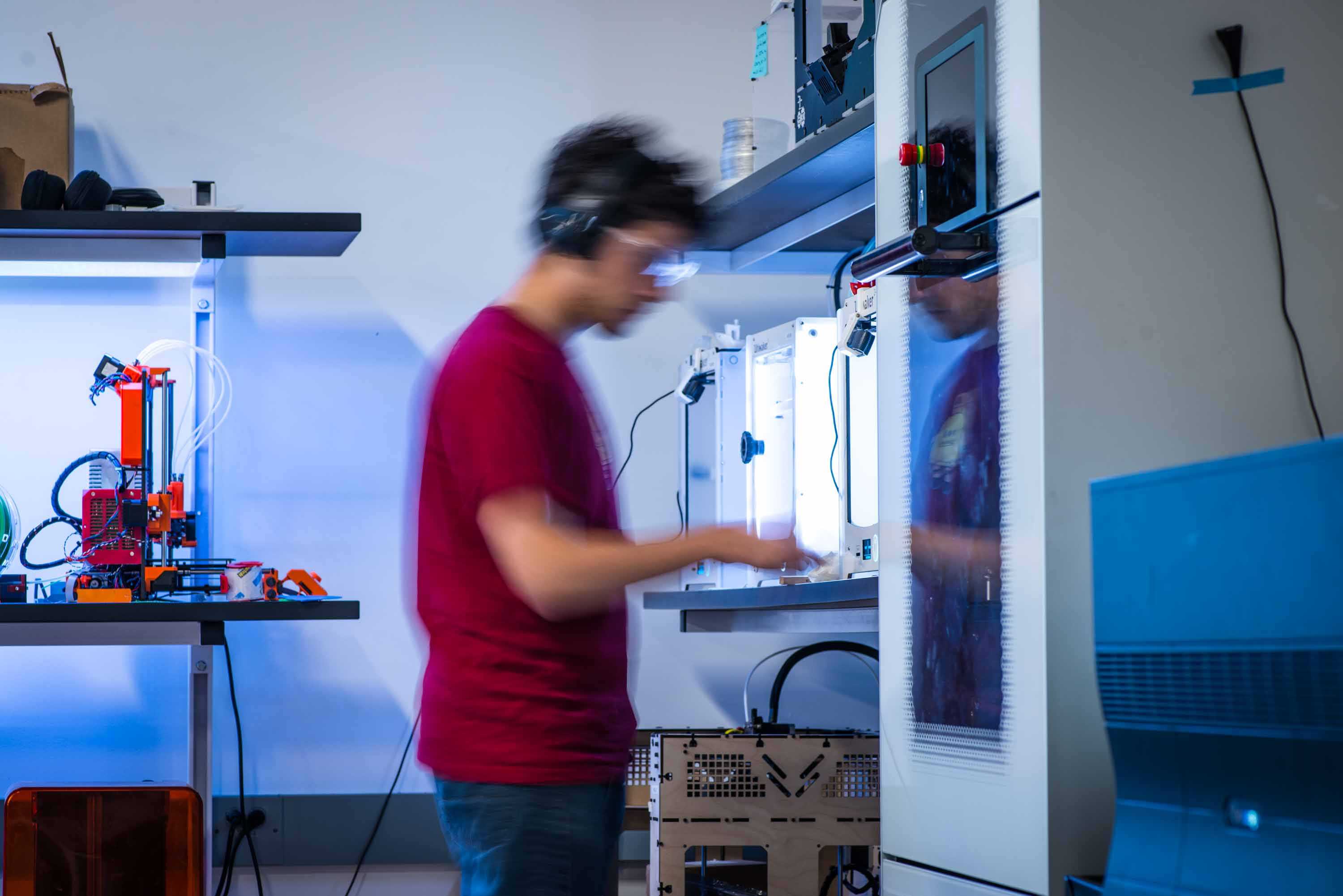Embracing the Future: 3D Printing Revolutionizes Manufacturing and Attracts a New Generation of Workers

The fourth industrial revolution is converging digital and physical processes and the manufacturing sector is continuing through a profound transformation thanks to the integration of cutting-edge technologies like 3D printing. Additive manufacturing not only enhances the efficiency and precision of production, it can also play a pivotal role in attracting a new generation of talent.
According to a study by the Manufacturing Institute (MI), the industry faces a projection of 2.1 million unfulfilled jobs by 2030, “if we do not inspire more people to pursue modern manufacturing careers.” Adopting technologies like 3D printing can help companies bridge the generational gap to Millennial and, increasingly, Gen Z employees, making them stand out to attract a top workforce while also ensuring the future of their business to grow and take on new work.
Staying ahead of the curve
A significant factor in attracting younger workers to the manufacturing sector is the promise of a tech-savvy work environment. A generation that has grown up surrounded by digital tools expects to work in a high-tech setting. They reject the notion of outdated, manual production lines and prefer state-of-the-art facilities equipped with interconnectivity, 3D printing, robotics, and automation.
Furthermore, young professionals are eager to acquire new skills and stay relevant in an ever-evolving job market. 3D printing presents an exciting learning opportunity for workers to gain experience with an advanced technology and establish themselves as experts in the expanding additive field. With investments in technologies like 3D printing, the manufacturing sector will be a hub for continuous learning and professional development, appealing to a generation that values lifelong learning.
Unleashing creative problem solving
When looking where to start their careers, younger workers tend to focus on industries that foster innovation and creativity. With the expansion of consumer printers and maker spaces around the world, digital natives like Generation Z have not only grown up with the internet, but are increasingly native to once-obscure technologies like 3D printing. Younger generations, without the “experience” of traditional manufacturability constraints, are attracted to technologies that unleash creativity with the ability to turn digital concepts into tangible metal objects in a short amount of time.
3D printing also enables the manufacturing of highly-customized and personalized products, especially in industries where individualized solutions are becoming more prevalent like consumer goods and healthcare. Younger workers, accustomed to personalized experiences in various aspects of their lives, are drawn to industries that offer opportunities to create unique and tailored products.
Facilities that foster a dynamic and forward-thinking environment, and invest in the tools to bring ideas to life, are particularly attractive to younger generations who thrive on innovation and creative problem-solving.
Embracing environmental responsibility
Younger workers, more than past generations, are interested in aligning their core values to their work. With increasing concern about the environmental impact of industries, manufacturers are looking at 3D printing technologies to help them operate more sustainably than with traditional manufacturing methods. This Life Cycle Assessment (LCA) commissioned by the Additive Manufacturer Green Trade Association showed 38% reduction in greenhouse gas emissions when binder jetting a production component compared to the traditional casting process.
Desktop Metal additive technologies enable workers to produce complex parts that often increase functional performance - and with precise material usage. Manufacturers embracing binder jet 3D printing can reduce waste, recycle material, and operate with a more sustainable strategy to attract workers that value sustainability and corporate social responsibility.
As the manufacturing sector evolves, embracing 3D printing is not just a technological upgrade, it's also a strategic business move to attract new workers. The fusion of innovation, growth, and sustainability makes metal 3D printing a key technology to help position manufacturing as an exciting and dynamic field for the workforce of the future. Additive technologies like binder jetting can help manufacturers bridge the generational gap to propel the industry into a new era of success.